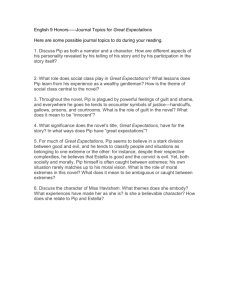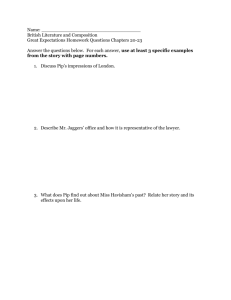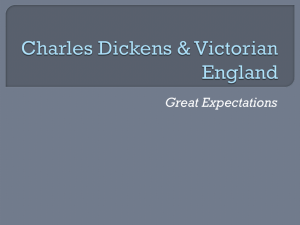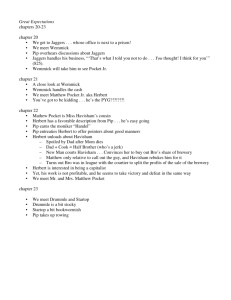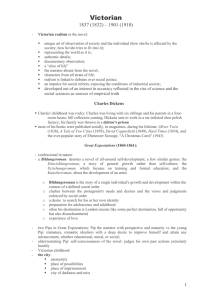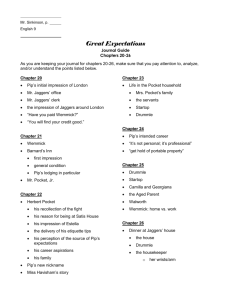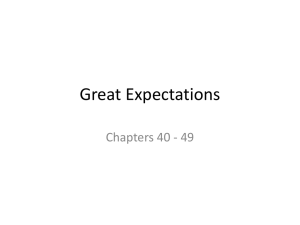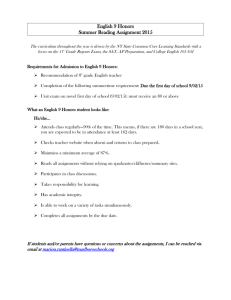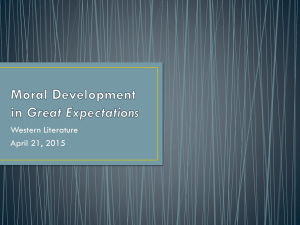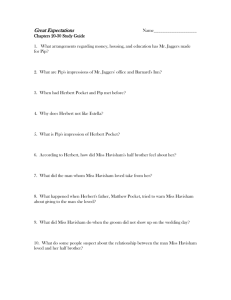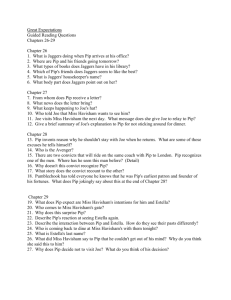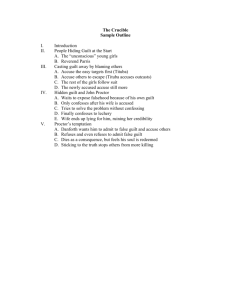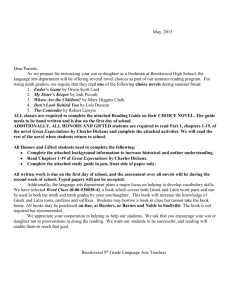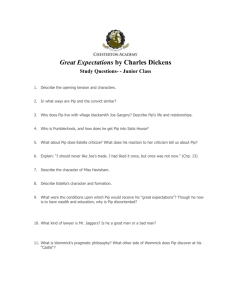Great Expectations
advertisement
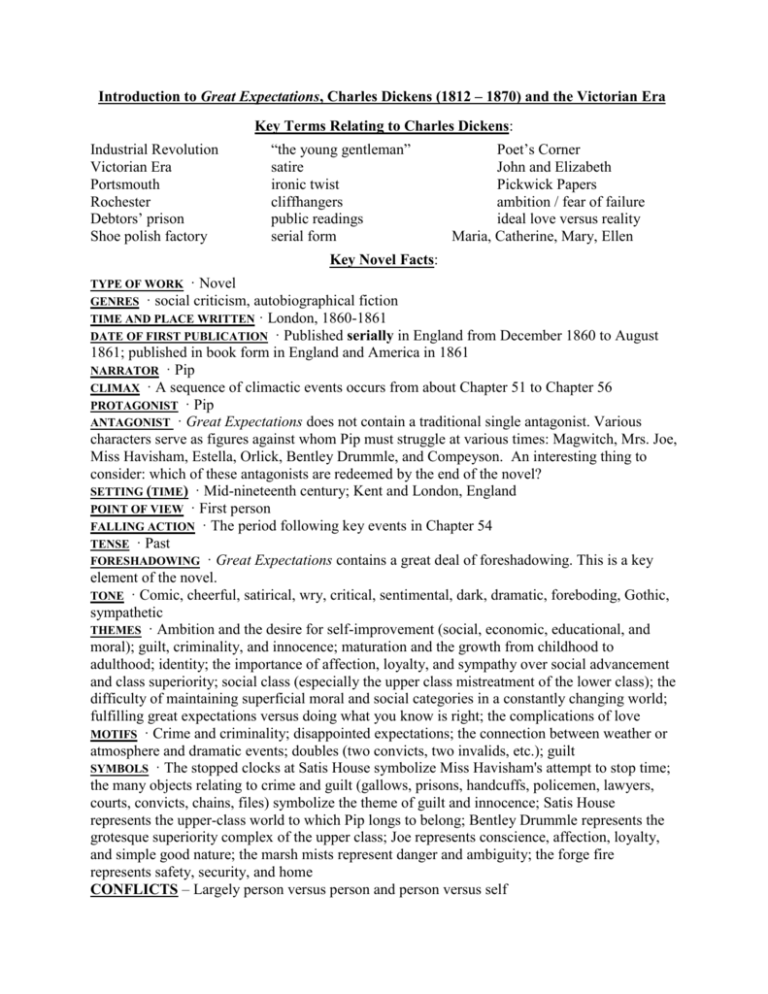
Introduction to Great Expectations, Charles Dickens (1812 – 1870) and the Victorian Era Key Terms Relating to Charles Dickens: Industrial Revolution Victorian Era Portsmouth Rochester Debtors’ prison Shoe polish factory “the young gentleman” satire ironic twist cliffhangers public readings serial form Poet’s Corner John and Elizabeth Pickwick Papers ambition / fear of failure ideal love versus reality Maria, Catherine, Mary, Ellen Key Novel Facts: TYPE OF WORK · Novel GENRES · social criticism, autobiographical fiction TIME AND PLACE WRITTEN · London, 1860-1861 DATE OF FIRST PUBLICATION · Published serially in England from December 1860 to August 1861; published in book form in England and America in 1861 NARRATOR · Pip CLIMAX · A sequence of climactic events occurs from about Chapter 51 to Chapter 56 PROTAGONIST · Pip ANTAGONIST · Great Expectations does not contain a traditional single antagonist. Various characters serve as figures against whom Pip must struggle at various times: Magwitch, Mrs. Joe, Miss Havisham, Estella, Orlick, Bentley Drummle, and Compeyson. An interesting thing to consider: which of these antagonists are redeemed by the end of the novel? SETTING (TIME) · Mid-nineteenth century; Kent and London, England POINT OF VIEW · First person FALLING ACTION · The period following key events in Chapter 54 TENSE · Past FORESHADOWING · Great Expectations contains a great deal of foreshadowing. This is a key element of the novel. TONE · Comic, cheerful, satirical, wry, critical, sentimental, dark, dramatic, foreboding, Gothic, sympathetic THEMES · Ambition and the desire for self-improvement (social, economic, educational, and moral); guilt, criminality, and innocence; maturation and the growth from childhood to adulthood; identity; the importance of affection, loyalty, and sympathy over social advancement and class superiority; social class (especially the upper class mistreatment of the lower class); the difficulty of maintaining superficial moral and social categories in a constantly changing world; fulfilling great expectations versus doing what you know is right; the complications of love MOTIFS · Crime and criminality; disappointed expectations; the connection between weather or atmosphere and dramatic events; doubles (two convicts, two invalids, etc.); guilt SYMBOLS · The stopped clocks at Satis House symbolize Miss Havisham's attempt to stop time; the many objects relating to crime and guilt (gallows, prisons, handcuffs, policemen, lawyers, courts, convicts, chains, files) symbolize the theme of guilt and innocence; Satis House represents the upper-class world to which Pip longs to belong; Bentley Drummle represents the grotesque superiority complex of the upper class; Joe represents conscience, affection, loyalty, and simple good nature; the marsh mists represent danger and ambiguity; the forge fire represents safety, security, and home CONFLICTS – Largely person versus person and person versus self
